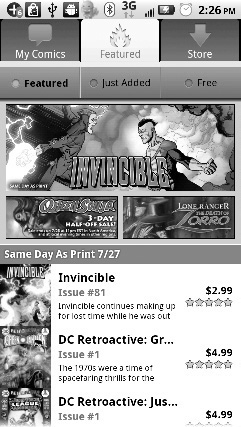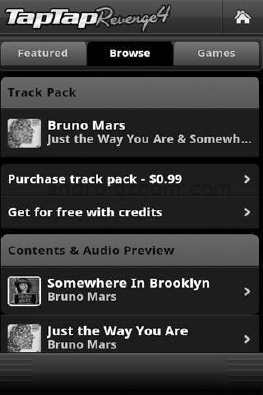In-App Billing for Android
As mentioned in Chapter 6, there is more than one way to make money on an application. One of them is a recent update (just started in March 2011) for Android developers that allows them to sell content from their applications.
Like the in-app purchases introduced on iPhone SDK 3.0, the Android Market in-app billing provides a billing request for specific in-app products, such as virtual goods. The best part is that the application does zero work when handling the financial transactions, as checkout details are handled by the Android Market. This includes requesting and validating in the form of payment and processing, and in-app billing even sends the order number, order time, order date, and price paid to the application.
According to the Android Developers site, some in-app billing implementations use a private remote server in order to deliver content or validate transactions. This remote server can be useful if selling digital content needs to be delivered to a user’s device, like photos or media files. It is also helpful for storing the user’s transaction history or performing various in-app billing security tasks like signature verification.
Examples of In-App Billing
One example of in-app billing is Comics, by Comixology. Comics is an application that is designed to give Android smartphone and tablet users access to digital versions of their favorite comic books. Downloading the application is free, but some of the comics cost the user. I imagine that Comixology had to make some sort of deal with the comic book companies in order to offer this service, but after those companies receive their share of the profits, Comixology no doubt makes a healthy profit from comic book readers paying for digital comic book content. All that is required of the user is to create an account online, and it syncs up very well (see Figure 7-4).

Figure 7-4. A screenshot from the store at Comixology, where users can purchase their favorite comic books in digital form
As you can see, offering digital content for in-app billing is all about giving the customer what they want, and making sure that it lines up with your application. Tap Tap Revenge uses the same kind of marketing in order to sell music tracks. Tap Tap Revenge is a music game where players tap on the screen to the rhythm of their favorite tunes, similar to music games such as Guitar Hero and RockBand. Tap Tap Revenge offers a few songs for free, but if you want more, then you have to pay. I’m sure that the music industry gets their percentage, as well as the developers (see Figure 7-5).

Figure 7-5. Tap Tap Revenge 4 uses in-app billing so the user can purchase more tracks for this music-based game.
Many gaming applications, such as Tap Tap Revenge, have a sort of token economy that allows the user to play the game, and then use points or coins earned within the game to buy bonuses. In Gun Brothers, from Glu Mobile, the user has the opportunity to play a shooting game and earn a lot of points. These points can be used to purchase gun upgrades and so forth. However, if the user wants to take a shortcut and just buy the upgrades, he or she is more than welcome to do that, thanks to in-app billing (see Figure 7-6).

Figure 7-6. The in-app billing on Gun Brothers allows the user to buy war bucks or coins that can be used for armor, weapons, and power-ups.
You may be surprised that there is a market for these types of virtual gaming goods, but oddly enough, people actually pay money for game bonuses. This is the beauty of gaming applications: many gamers are willing to lay their money down for things that only exist in a virtual gaming world. That certainly is a positive thing for developers.
